Thuja western "Woodwardie": description and cultivation
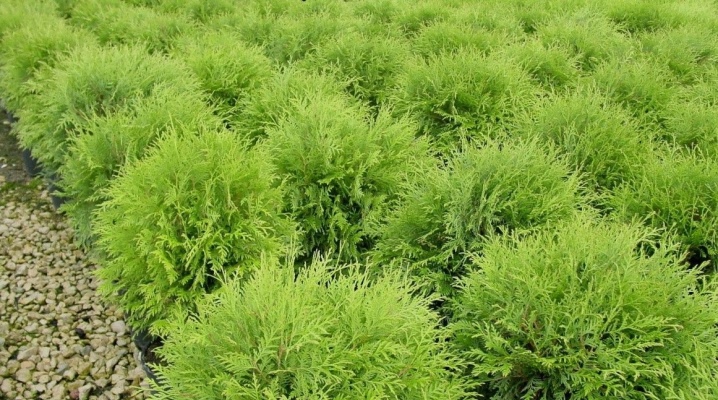
Making out a summer cottage, many gardeners prefer the Woodwardy thuja, characterized by the presence of an unusual spherical crown. Thanks to its original form, the plant attracts the eye without any additional effort, and its ease of care makes life much easier for its owners.
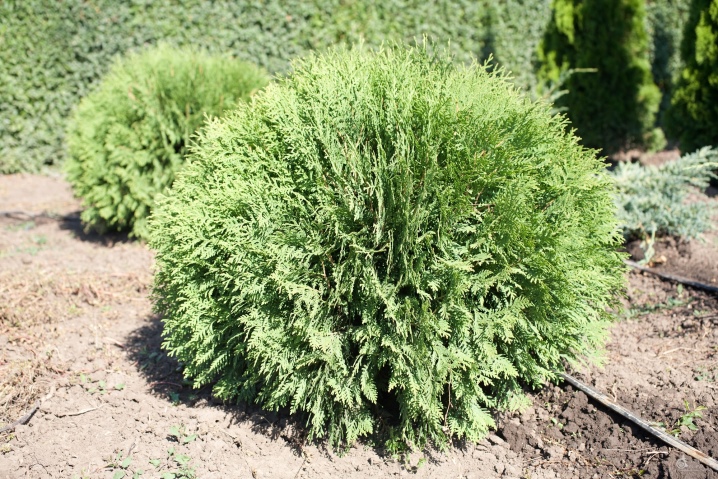
Description
Western thuja "Woodwardy" is a coniferous perennial. The dimensions of the tree are not very impressive - for 10 years of life, it hardly crosses the mark of 50 centimeters. However, an adult plant can grow to a height of 2 or 3 meters - the diameter of the crown in this case will be approximately 3 meters. The main advantages of this variety are called its visual appeal, as well as resistance to negative environments.
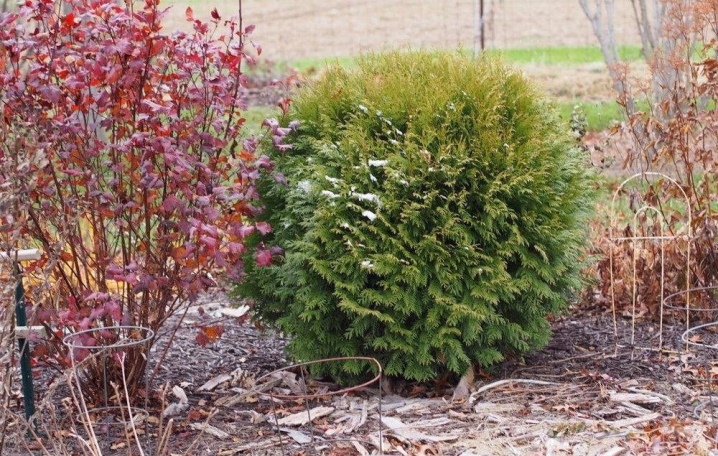
For example, "Woodwardy" will be able to grow well even on gas-polluted city alleys.
The shoots are covered with needles of a beautiful green hue, which persists throughout the winter months. On adult thujas, pineal fruits of a rich brown color appear, then they are combined into small panicles.
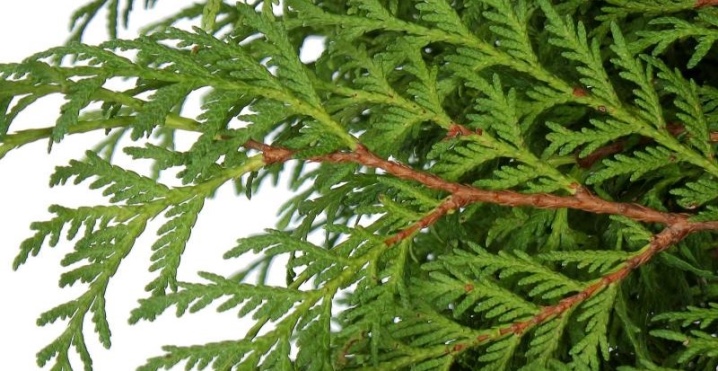
How to plant?
The seedling can be transplanted to its permanent habitat only 2 years after it was cut from the tree. The soil should be light, always containing peat and sand. If necessary, the excess amount of the second component can be easily corrected by adding clay. If the soil is too heavy, then an additional layer of drainage should be created, the depth of which ranges from 15 to 20 centimeters, and compost should be added. Planting of seedlings begins in the spring, which allows the Woodwardy thuja to settle down and take root until the autumn frosts.
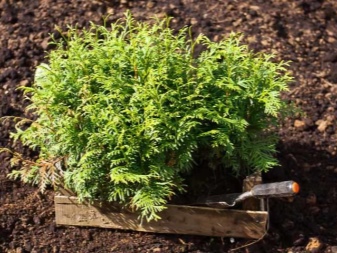
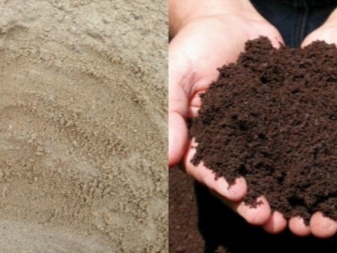
If several thujas sit down at the same time, for example, forming a hedge, then a gap should be left between them with a width of 50 centimeters to 1 meter. At the stage of preparation, the soil is actively dug up and cleared of weeds and roots of other plants. It is better to dig a hole in 24 hours - such a time period will allow it to be saturated with oxygen. The soil mixture itself, which the hole will be filled with, should contain peat, sand and sod.
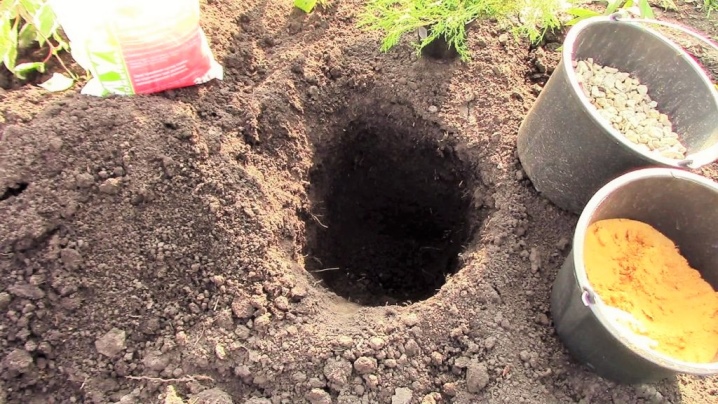
The dimensions of the dug hole are determined depending on the size of the root system of the thuja or the existing earthen coma. Experts recommend digging 15-30 centimeters deep and maintaining a width of 35 to 40 centimeters. The bottom is covered with a drainage layer, after which it is covered with soil mixture mixed with compost or manure. The thuja itself is carefully transported into the pit by transshipment, along with the naturally formed earthen lump.
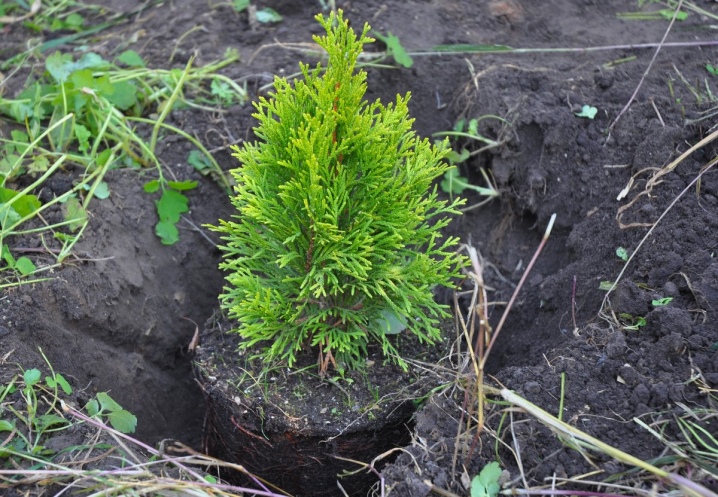
The resulting gaps are filled with earth, but it is important to ensure that the root collar remains a couple of centimeters above ground level.
The soil is slammed and watered abundantly. How much to water depends on the size of the tree, but usually one to five buckets are taken for each. After waiting for the soil to settle, it is necessary to mulch. For this purpose, it is best to use hay, wood chips, peat and pieces of bark. Mulch should be located around the thuja without overlapping the trunk, otherwise it will be easy to provoke the decay process.
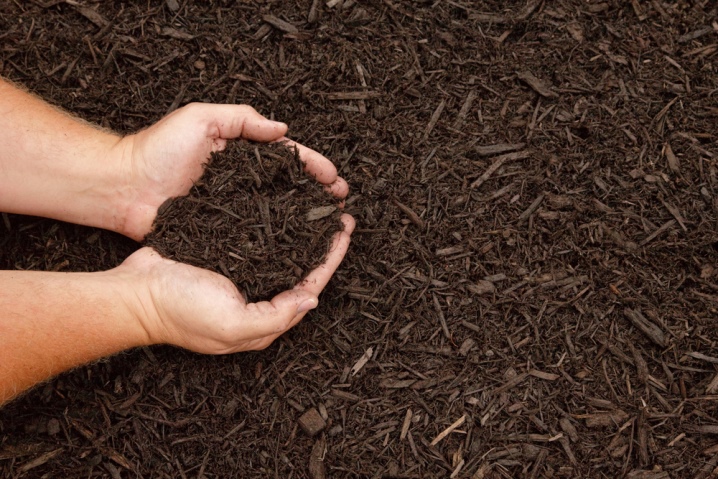
Correct care
Thuja "Woodwardy" is not too whimsical, and therefore the process of caring for her is quite simple.
Watering
Watering is an important part of the care process, because a lack of liquid can lead to a deterioration in the condition of the plant during wintering. In normal weather, water the thuja every week, and in dry weather, increase the frequency of irrigation up to twice a week. Each seedling should get 10 to 15 liters of water.
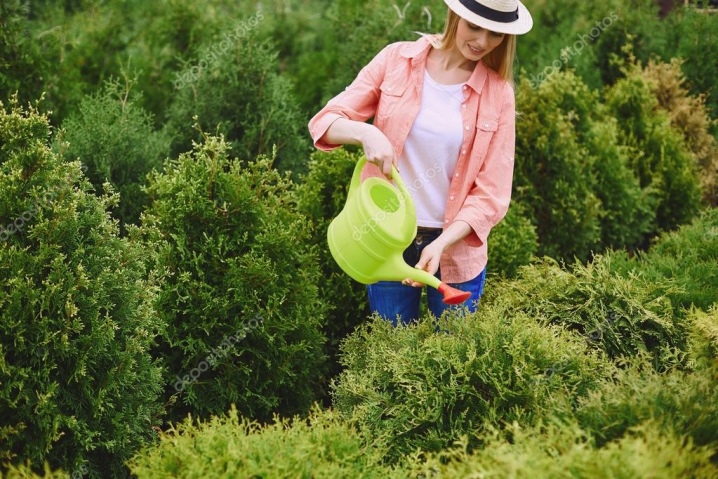
Watering is accompanied by a loosening process, which should be done very carefully, without injuring the roots.
In addition, professionals recommend arranging sprinkling for thuja, restoring the required amount of moisture that quickly evaporates from the surface of the needles. In addition, this procedure helps to cleanse the shrub and give it a better appearance. All water procedures are required in the morning.
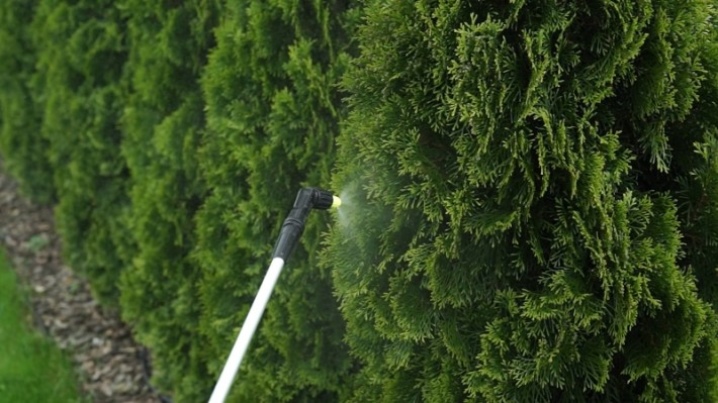
Top dressing
Fertilizers "Woodwardy" are required regularly, otherwise the condition of the crown of the bush will suffer greatly. When planting, they are added directly to the pit, and the next feeding is carried out after a couple of years. It is customary to use manure, compost and commercial complexes containing potassium and phosphorus. Mineral mixtures for thuja are not shown too much, as they help to reduce the acidity of the soil., which means that they have a bad effect on the plant itself. It is most convenient to combine top dressing with loosening the soil following irrigation, and do it in July.
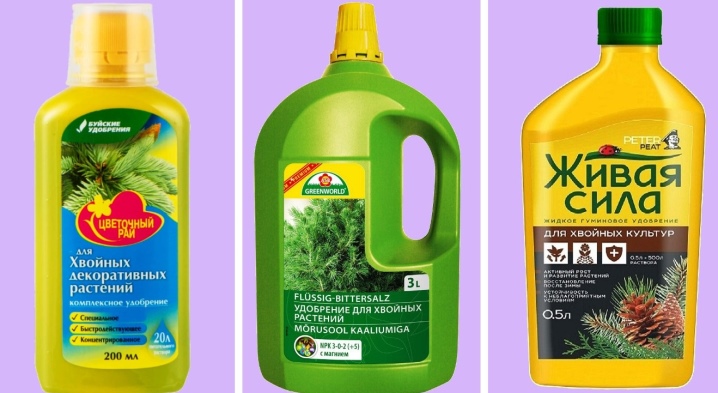
Pruning
Pruning is necessary "Woodwardy" in order not to lose the attractive and unusual appearance of the crown. The correction should be done while the buds have not yet blossomed, that is, in March or April. The first pruning is done at two or three years of age. To preserve the spherical shape, it is necessary to preserve a couple of bearing shoots, but not to remove more than three stems. Sanitary pruning is done as needed. During the procedure, thuja gets rid of dried, diseased branches or those that grow in the wrong way.
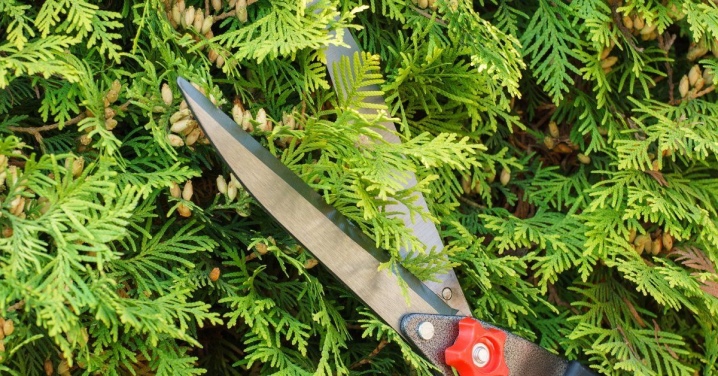
Sanitary adjustments are carried out at least twice a year.
There is also a third type of pruning - anti-aging, the essence of which is to combat drying out, and to make the plant healthier. During it, about 2/3 of the length of the branches must be removed. Such an adjustment should be carried out over three years, from late autumn to early spring.
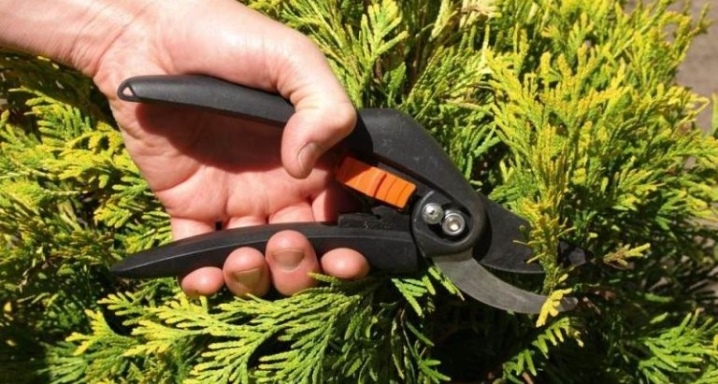
Wintering
Woodwardy copes well with frost and low temperatures down to -35 degrees. Previously, however, it is worth performing a number of preparatory measures. The trunk circle is mulched with sawdust or spruce branches, and the young seedling is closed with a bag or special material sold in gardening stores. This must be done, otherwise the thuja will suffer greatly from bright sunlight. An adult plant is tightened with a net and additionally tied with a tape to protect it from precipitation. In addition, special preparations are sprayed to protect the needles from dehydration and the negative effects of sunlight.
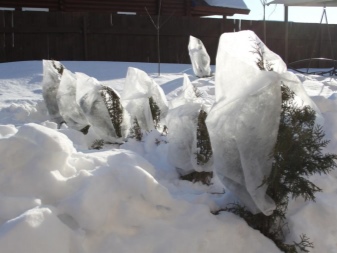
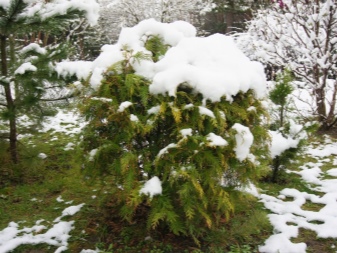
Reproduction methods
Tuyu "Woodwardy" is usually propagated using seeds or vegetatively. The seed method is used to grow a specific crop variety, since it takes a very long time - from 3 to 5 years, and also most often leads to the loss of the maternal characteristics of the variety. Ordinary gardeners choose propagation using cuttings. The process begins in April, when a 40-centimeter cutting takes place along with the heel.
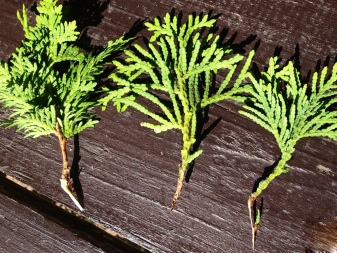
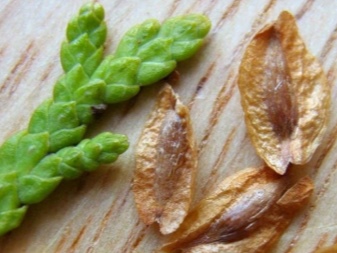
The opened wound must be treated with a solution of heteroauxin or with an ordinary garden pitch.
The lower part of the cutting is freed from the needles, after which it is sent overnight to the already prepared growth enhancer. Experts recommend using sphagnum, which not only retains moisture, but also prevents the occurrence of fungal diseases. The next day, the cutting is immediately placed in a soil mixture, usually consisting of turf, peat and sand.Deep in the twig is placed only 2.5 centimeters, after which it is equipped with a shelter, the purpose of which is to protect from the sun. If possible, diffused lighting is organized for the thuja.
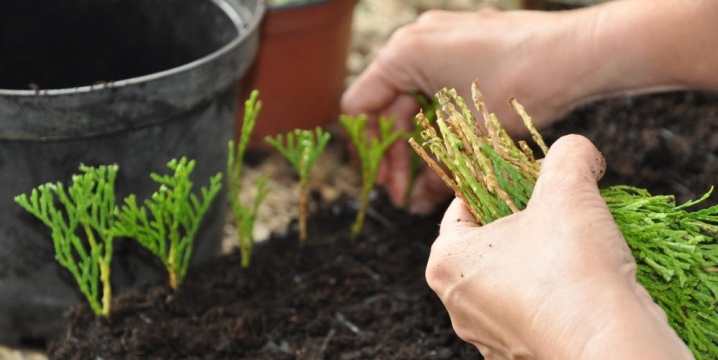
Rooting of the cuttings can be determined by the freshly grown shoots. Further, the seedlings gradually begin to ventilate and temper so that after a while the protective shelter can be completely removed. Irrigation and spraying procedures are becoming permanent. As soon as the cold snaps begin, and the temperature drops below zero, it will be time to return the shelter, but already performing other functions. For winter protection, it is best to use spruce branches or fallen leaves found on the site.
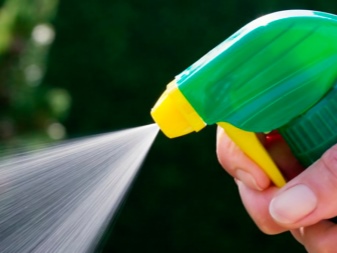
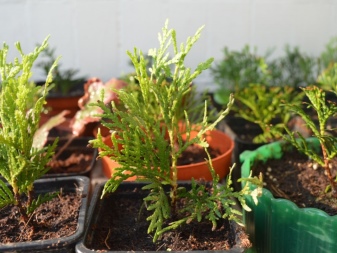
Diseases and pests
To avoid the harmful effects of diseases, it is necessary to regularly examine the thuja for common diseases. When infected with stem rot, the color of the needles changes, and the trunk becomes covered with growths and rotten areas. To save the plant, it is necessary to promptly remove the affected areas and treat the wounds that have appeared with drying oil. When the roots rot, the needles also change their color. The bush begins to dry and seem to shrink in size, in addition, its lower part softens. Such a thuja cannot be saved - it will have to be destroyed, moreover, together with the layer of earth where it grew.

Dying needles indicate the appearance of brown mold. Another symptom of the disease is the appearance of plaque, its form resembling a cobweb and painted in a grayish-black color. For the prevention of this disease, "Fundazol" is used, which is used several times a year.
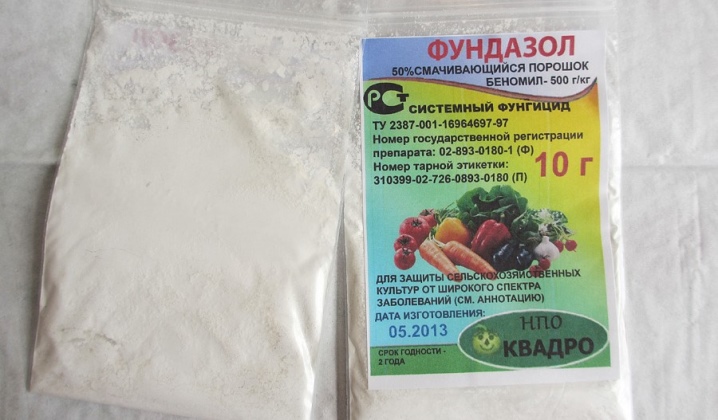
Of the pests, "Woodwardy" most often attacked by spider mites, thuja false insects and aphids. In all cases, the plant is saved only by the use of insecticides.
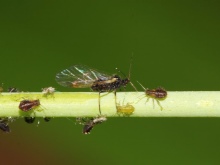
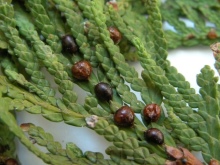
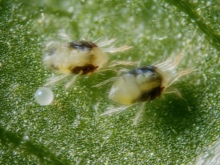
As a preventive measure, it is recommended to carry out such treatment at the end of spring.
Use in landscape design
In landscape design, thuja "Woodwardy" is used both for creating a hedge and for the usual decoration of the site. Often, the plant is placed along the road, having previously planted it in a large pot or left in its natural form. The evergreen ball fits perfectly into flower beds, becomes a decoration for verandas or balconies. When creating alpine slides, Woodwardy thuja is chosen as an eye-catching accent.

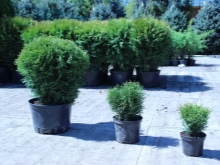
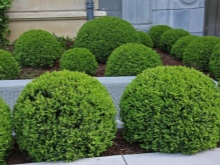
Watch the video below about the western thuja "Woodwardy".



































































The comment was sent successfully.